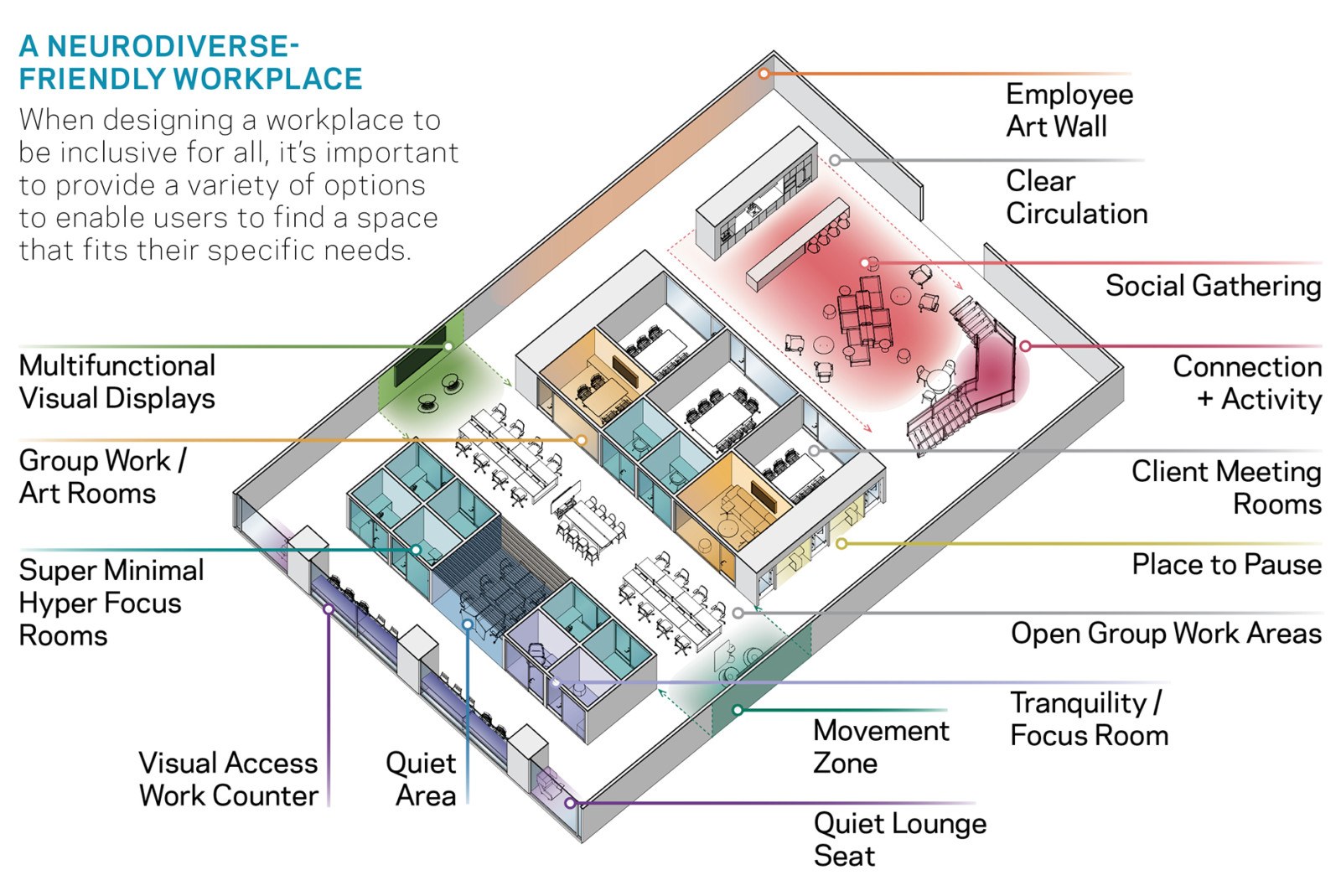HOK’s Kay Sargent joined host Steve Lubetkin in a discussion of creating work environments that support both neurotypical and neurodiverse employees.
HOK recently released a report on “Designing a Neurodiverse Workplace.”
Excerpted from the CRE News Hour podcast:
On the typical kinds of neurodiverse employees to think about when planning a more inclusive workplace:
“It can be people with conditions including autism spectrum disorder, Tourrette’s, ADHD, dyslexia. … As we live and work longer, we have to deal with more people getting Parkinson’s in the workplace. Neurodivergents are people who are wired differently. They have incredible strengths and some challenges.”
On the need to design workplaces for the neurodivergent:
“Think about all the things we do to accommodate kids in school who are neurodiverse—they don’t outgrow it. Once they come into the office there can be a stigma associated with that and most don’t want to admit they are neurodiverse. That sets them up in many cases for failure in the workplace because we haven’t accommodated the space to be designed for them. So we started putting these dots together and doing more research around that.”
On what designers can do to make workplaces welcoming and comforting:
“As designers we understand the art of space. But there’s an absolute science behind what we do. … For every decision we make as a design firm there is a reason and a purpose. Nothing is random. … We challenged our designers to think about how to create this ecosystem that is well-balanced and that will give people the retreat and types of spaces they need to succeed.”
“Color can be important. Clarity of space. Making sure we’re giving people clear lines of navigation, not making spaces overly confusing. Making areas for people where they can control the amount of distractions or engagement they have. It sometimes can be very difficult for the neurodiverse to cut off the noise and chatter. It’s also important for people to have areas where they can go to get out their excess energy. … Stimulation is big issue: acoustic, visual and physical. We’re giving people options and choices. A variety of different things impact different people in different ways. We need to create environments that have an ecosystem of options and choices so people who are neurodiverse can decide the right setting for them at any given time.”
